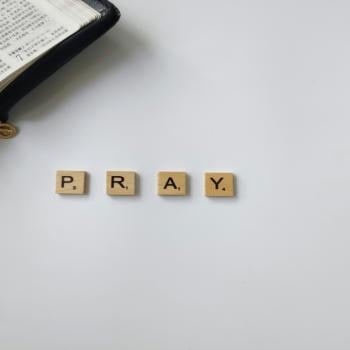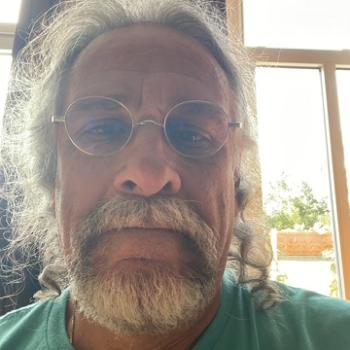 In 1989 the Congregation for the Doctrine of the Faith delivered a Letter to the Bishops of the Catholic Church on Some Aspects of Christian Meditation. In Section V of that document, then-Cardinal Joseph Ratzinger (now Pope Benedict XVI) wrote: "Just as ‘the Catholic Church rejects nothing of what is true and holy in [the great religions]' neither should these ways be rejected out of hand simply because they are not Christian. On the contrary, one can take from them what is useful so long as the Christian conception of prayer, its logic and requirements are never obscured." As an increasing number of Catholics are exploring the health benefits of yoga, there is a growing debate among church members that suggests a need for additional teaching and clarification from the Bishops. With that in mind, Patheos will occasionally present on the question, from a variety of perspectives. Here Catholic writer Mary DeTurris Poust shares her thoughts.
In 1989 the Congregation for the Doctrine of the Faith delivered a Letter to the Bishops of the Catholic Church on Some Aspects of Christian Meditation. In Section V of that document, then-Cardinal Joseph Ratzinger (now Pope Benedict XVI) wrote: "Just as ‘the Catholic Church rejects nothing of what is true and holy in [the great religions]' neither should these ways be rejected out of hand simply because they are not Christian. On the contrary, one can take from them what is useful so long as the Christian conception of prayer, its logic and requirements are never obscured." As an increasing number of Catholics are exploring the health benefits of yoga, there is a growing debate among church members that suggests a need for additional teaching and clarification from the Bishops. With that in mind, Patheos will occasionally present on the question, from a variety of perspectives. Here Catholic writer Mary DeTurris Poust shares her thoughts.
 When I took my first yoga class more than twenty years ago, I was in a bit of a crisis in terms of the Catholic faith of my birth. My mother had recently died and I had moved out of my family home and across the country. I was searching in so many ways and came upon yoga through a friend who knew a teacher who held classes in her home. There, on a mat in an empty living room, I learned how to stretch and settle my body in new ways, ways that allowed me to more easily enter a spiritual realm that has always beckoned to me.
When I took my first yoga class more than twenty years ago, I was in a bit of a crisis in terms of the Catholic faith of my birth. My mother had recently died and I had moved out of my family home and across the country. I was searching in so many ways and came upon yoga through a friend who knew a teacher who held classes in her home. There, on a mat in an empty living room, I learned how to stretch and settle my body in new ways, ways that allowed me to more easily enter a spiritual realm that has always beckoned to me.
So began my odyssey into an Eastern world that some would have us believe is not only incompatible with Roman Catholic faith but dangerous to it. Of all the posts I put on Facebook, anything having to do with yoga is sure to stir up ominous warnings. I have been told, on more than one occasion, that it is the work of the devil. And yes, I have read what the Vatican has warned about "New Age" religions (FYI: Yoga isn't even remotely new). Quite frankly, someone who is inclined to make an idol of yoga, turning it into an obstacle rather than a pathway to God, is probably just as likely to turn certain devotions within the church into idols or superstitions—from obsessing over the trappings of the faith, to burying a statue to sell a house, to leaving slips of papers in pews as a guarantee that a prayer will be answered. Idolatry comes in all forms; it doesn't take yoga to make that happen.
Permit me, then, to take you into my world of yoga, a world where Amen and Om happily coexist. During my early days of yoga, I threw myself into the practice. I even managed a yoga center for a while and began training to become a teacher, something I regretfully never completed.
I read the BhagavadGita and Pantanjali's Yoga Sutras.
I chanted.
And yet, when it came time to meditate on a mantra, I didn't want anything Sanskrit. I wanted Christian scripture, because that is my core. As I sat in half-lotus position with many other yogis-in-training, I breathed in and out to the words: "Be still, and know that I am God." At a time of personal confusion and chaos, yoga gave me a peaceful place to reconnect with God, a way to listen to what He had to say above the din of my life, and an open door that led back to the richness of my own Catholic faith.
Over the years, my practice has waxed and waned, but inside me beats the heart of a Catholic yogi. When I recently returned to yoga class at my local YMCA, I was not on my sticky mat five minutes before I could feel myself smiling, my shoulders relaxing, and my heart singing. Different types of prayer methods work for different people and, for me, one thing is clear: Yoga is my entry into prayer, even in a sweaty, crowded YMCA studio.
Most people in this country don't do yoga as a spiritual practice. They do it because it helps their backs, or makes them more flexible. But I always hope for the daring YMCA teacher who inserts spiritual elements into a class. I don't do yoga to lose weight or get stronger, although those are surely side benefits. I do yoga to find that still, silent space at my center, where God can enter in.
Think of your own prayer life for a moment. Does kneeling help you enter more deeply into prayer? Does lying prostrate before an altar convey a sense of total surrender before God? In much the same way, yoga uses physical positions to help us reach spiritual heights, whatever our faith tradition.
As I stood on my mat last Sunday, listening to my teacher walk us through some difficult poses, he reminded us that we need to look at ourselves with compassion when we can't get something right, and he urged us to let that gentleness emanate outward when we left class. Yoga is about compassion.



